I.1 Once upon a time
At the location Hutstein two dominions, Rannariedl and Falkenstein, had given away a fief. It is important to know that both Rannariedl and Falkenstein originally belonged to one single aristocrat family, the counts of Falkenstein. Therefore, both, Rannariedl and Falkenstein, had fiefs in the same villages and locations as the territory was equally divided when the Falkensteiner had to pledge Rannariedl in 1301 for the first time.
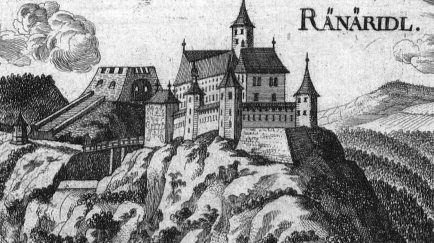
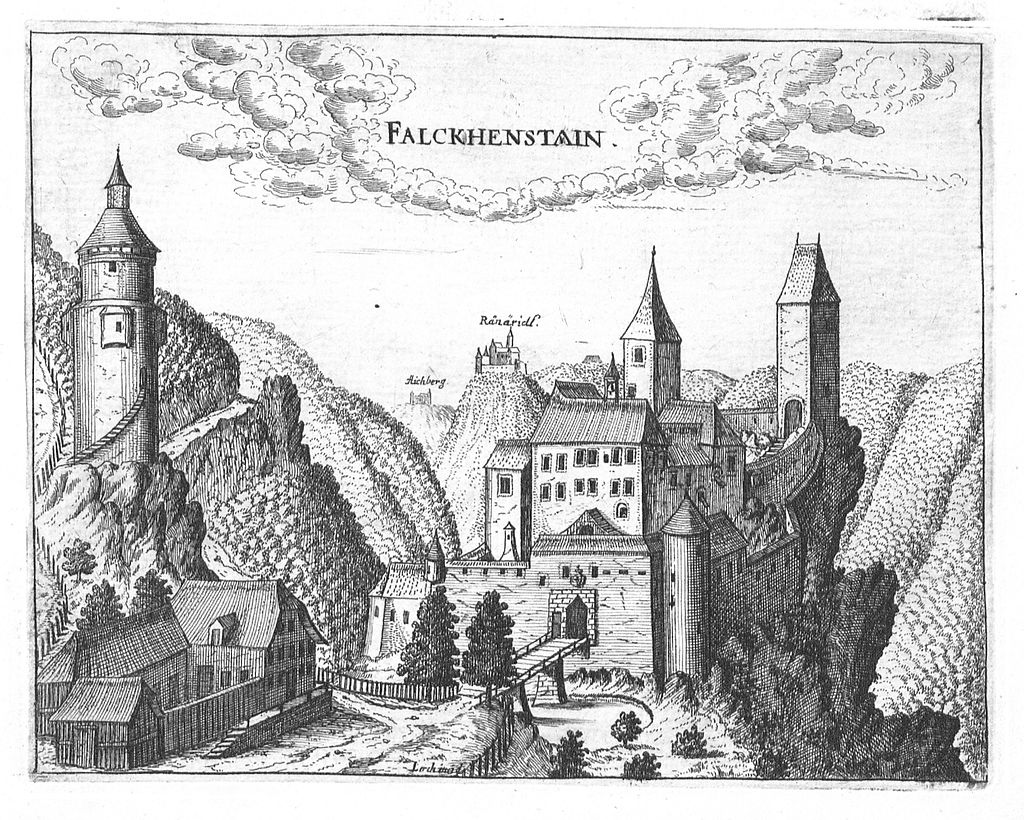
That’s the primary reason why Rannariedl as well Falkenstein had both a fief at Hutstein.
Acc. to the Urbar of Rannariedl and Falkenstein these two fiefs had same size. Therefore we can assume the location of both fiefs on a cadastre map of 1860:
As the road to these fiefs directly leads to the southern one it is likely that this one was the first granted at Hutstein and belonged to the Rannariedl dominion.
Rannariedl’s Hutstein fief
While in the Urbar of Rannariedl of 1488 no place ‘Huestain’ or similar was recorded or could be identified, in 1509 there was Tameln (Thomas) in Huestain (Hutstein) acc. to the available second Urbar of the dominion Rannariedl. It seems that between 1488 and 1509 the forest was cleared at this location and a fief was erected.
Thomas Hutsteiner is mentioned in another tax document of the dominion of Rannariedl from 1509, too:
In 1613 the fief was still mentioned in church balance records of Pfarrkirchen i.M. as “Themel”, i.e. Themel=Thomas. The given name of the very first inhabitant of this farm was used as the farm name.
Shortly after Thomas followed Anderl (=Andreas) on the Rannariedl’s Hutstein fief.
Andreas then was followed by Jörg (=Georg).
Unfortunately for both urbars there is no exact date of recording mentioned. Therefore it is necessary to estimate their emergence. As the first one seems more advanced than the Urbar of 1509 but has most of the time same inhabitants as in 1509, it likely was set up shortly after 1509, i.e. Andre followed Tameln at the Hutstein fief.
And as the next one obviously was based on the template of the urbar before likely Jörg (Georg) followed Andre by mid of the 16th century.
Then, in 1570 Steffan Hutsteiner was registered on the Rannariedl fief at Hutstein within the parish of Pfarrkirchen im Mühlviertel.
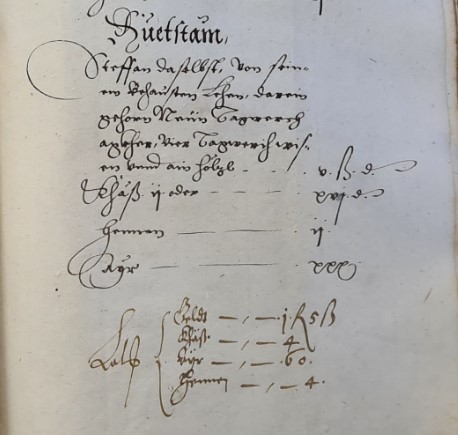
In 1581 in dominion Rannariedl Steffan Hutsteiner was registered at the Hutstein again:
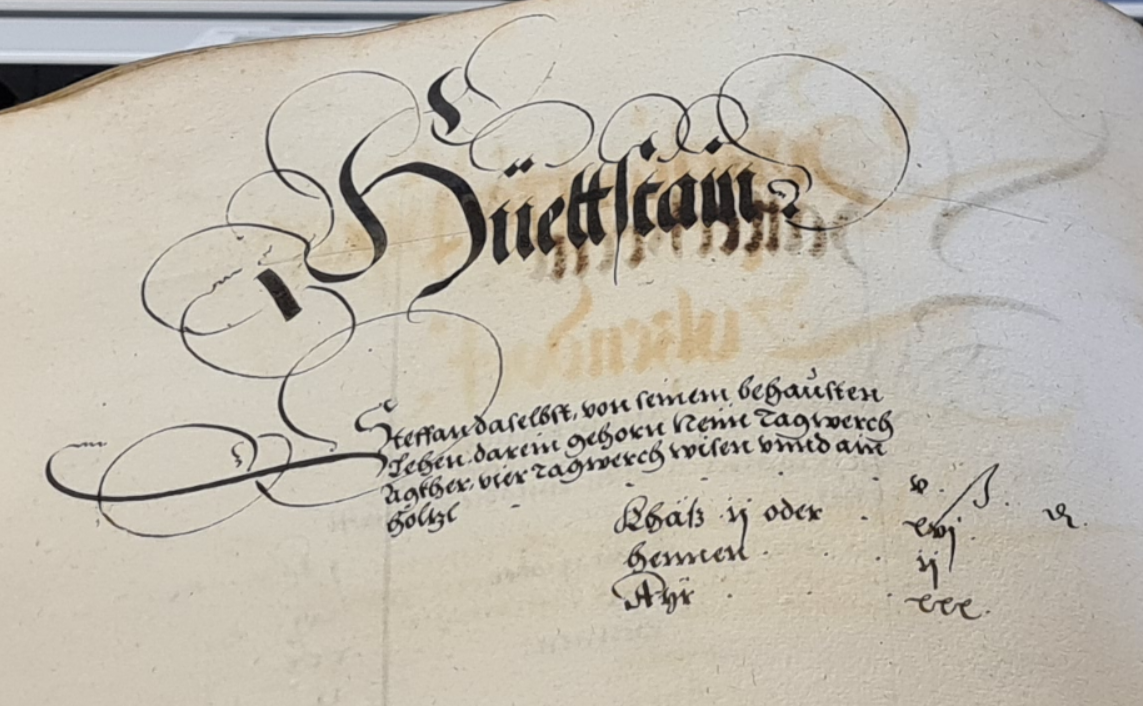
Steffan is again mentioned in a tax document from Rannariedl of 1581:
A Steffan Hutsteiner, born around 1536, was later mentioned again in court records of 1606 in the dominion Altenhof (=parts of Rannariedl + Falkenstein): Probably he is identical to the Steffan mentioned above, but moved away from Hutstein.
Another tax document from 1581 mentions Hans who paid tax at the Hutstein:

Rannariedl’s fief at Hutstein probably changed its owner around the 1580s as Hanns Aumülner was recorded to pay tax there on 18th January 1591. Likely he is identical with the above mentioned Hanns, i.e. no “original” Hutsteiner anymore at least since 1581.
It is interesting that a Hans Aumuellner occured in Altenhof court records a clerk (Amtmann) of the dominion Hochhaus from 1606 on.
Meanwhile, Michael Hutsteiner occurred in a document of dominion Rannariedl 1590, but his location was not given:
In 1600 Wolfgang Stölzl (Hutsteiner) from Hutstein paid for candles at the church of Pfarrkirchen and later he was mentioned in a tax document of 1623 and 1626 in court records of Altenhof. As Wolfgang died before 1627 probably his son Wolfgang followed him as owner of the farm, may be longer time before.

After Wolfgang Stölzl, who was in extreme depths in 1629, Paul Grubauer obviously bought and took over the fief followed by his son and grand son.
Falkenstein’s Hutstein fief
The second urbar of Rannariedl dated to the beginning of the 16th century mentions that the community of Kafring, a village nearby, may hunt at the Hutstein on half of the clearing. I.e. the second Hutstein fief belonging to the Falkenstein dominion was already existing at that time, too.
In 1537 the Urbar of dominion Falkenstein mentioned Hans Hutsteiner at the Hutstein (Huetterstain)

In 1562 the farm at Hutstein was inhabited by Hannsl (Johann) Hutsteiner, perhaps the Hannsl above. The location was noted as Huetstain.

In 1570 the Hutstein-farm was owned by Bangraz (Pankratz) Hutsteiner, but it is not known, whether he was a son of Johann above. The location was recorded as Huettenstain.

Pankratz (Pongratz) was again recorded in 1607. The Urbar mentions Pongratz (Pankratz) Hutsteiner as farmer there.
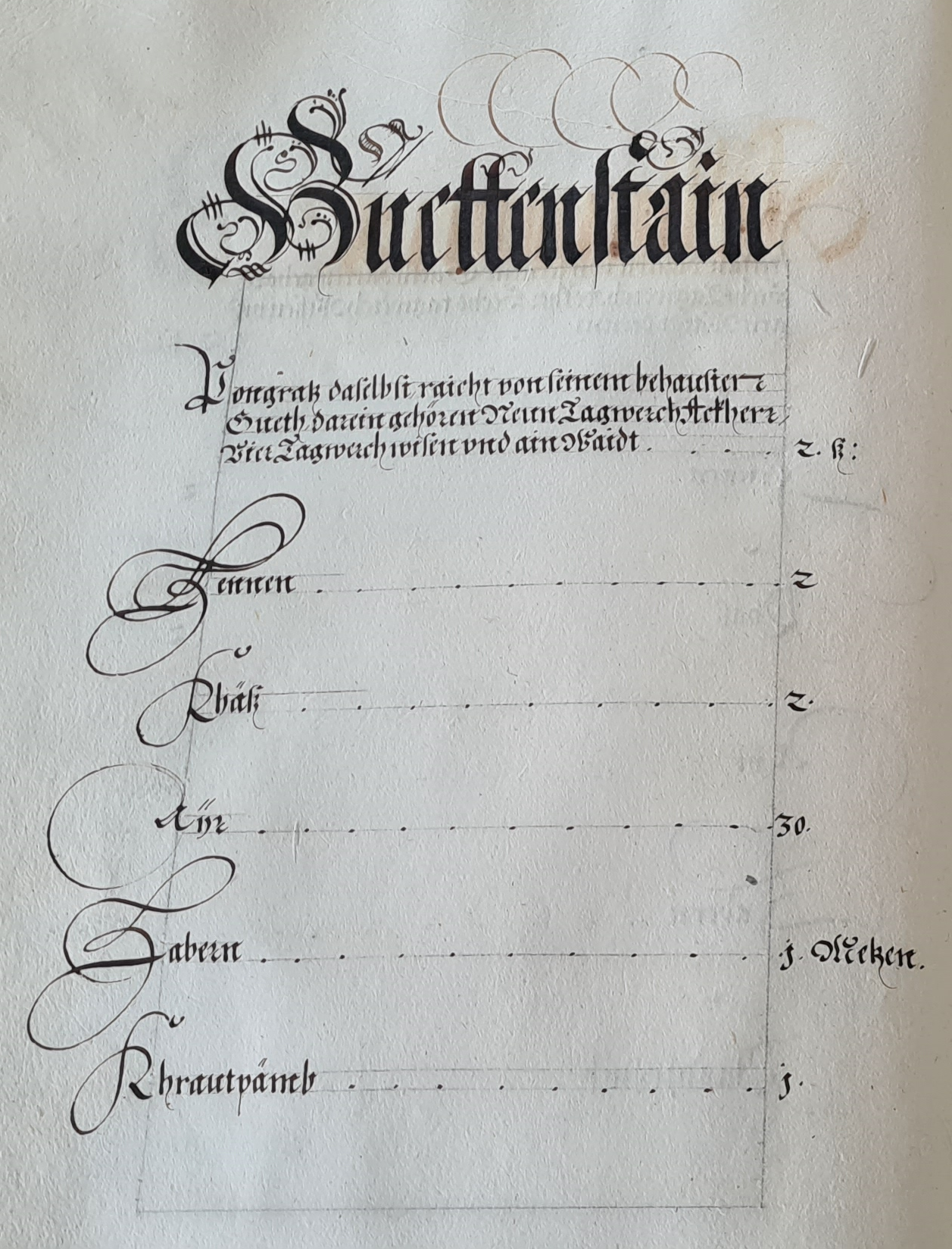
An additional tax documents shows us that Pankratz paid his tax from 1607 until 1612 there:
Pangratz Hutsteiner was followed by Zacharias Hutsteiner.
Around 1600 the dominion Rannariedl and the dominion Falkenstein were re-united under the reign of count Heinrich Salburger.
While surnames established during the 16th century and most of the underlings in 1581’s Urbar were named by their surname, it is necessary to mention that the surname Hutsteiner (Huetstainer) popped up within the dominion of Rannariedl and Falkenstein, the Hutsteiner origin, very rarely before 1600. This emphasizes that the location and its name and family name was established only short time before, i.e. approximately around 1509.
Lienhard Hutsteiner who erected the Hutsteiner mill in 1543 was the first documented person with the surname Hutsteiner. Probably he was a direct descendant of Tameln or Hannsl at Hutstein.
So, we had two family lines at Hutstein: the first one started with Tameln (Thomas) Hutsteiner around 1509 in Rannariedl dominion and ended around 1581 with Steffan Hutsteiner, the second one started with Hannsl (Johann) Hutsteiner around 1537 in Falkenstein dominion and probably ended around 1670 with Zacharias Hutsteiner.
Whether Hannsl was a descendant of Tameln or from another family probably never will be clarified, but as the second fief was within another dominion likely it was another family. Also it is not defined whether succeeding farmers on the two different fiefs had been descendants of the former farmer, i.e. it is not clear whether e.g. Pongratz was a son of Bangratz and so on.
Anyhow, it seems that the survival of the surname Hutsteiner was not guaranteed for at least a century and should be regarded as a lucky coincidence.


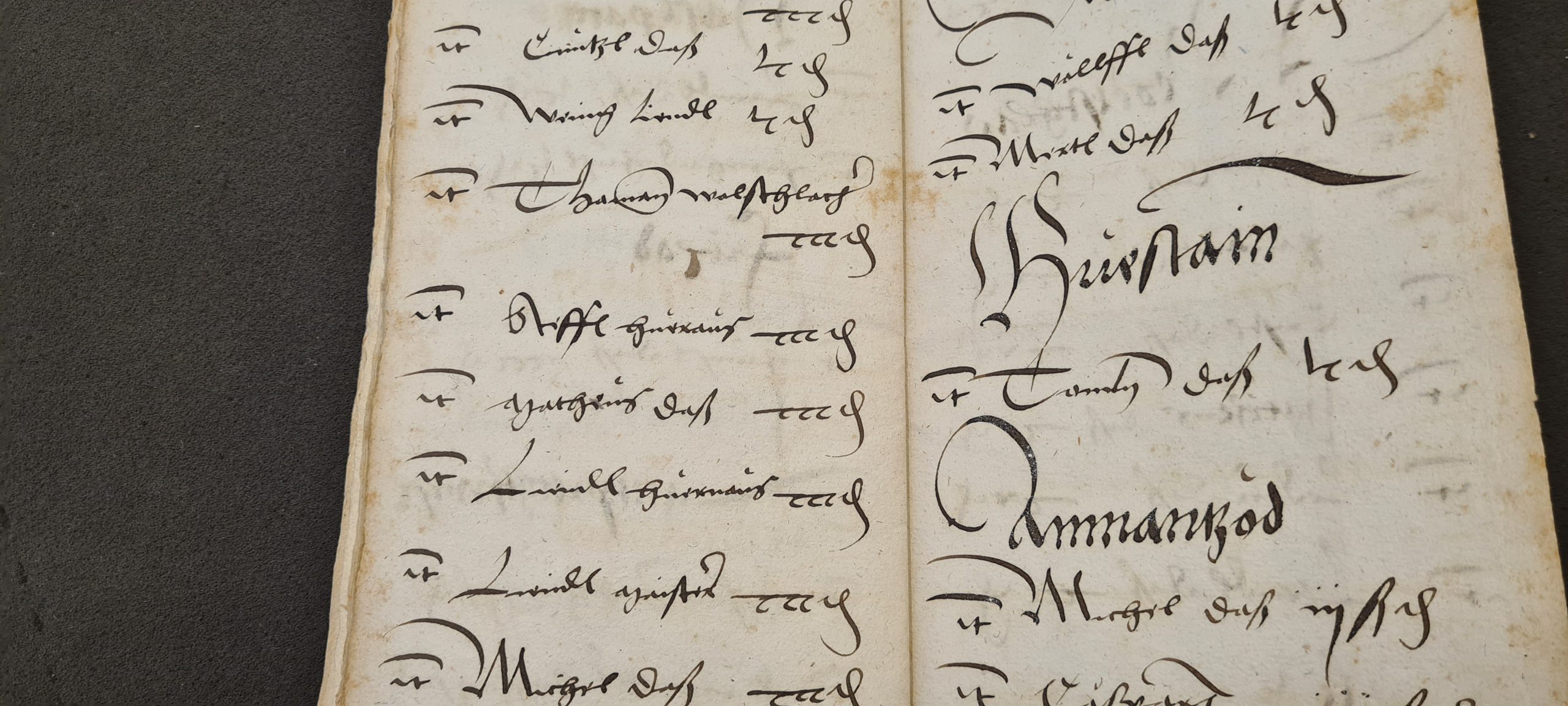

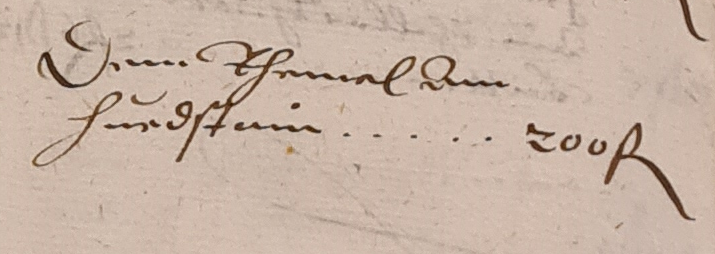
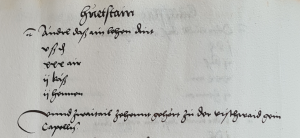
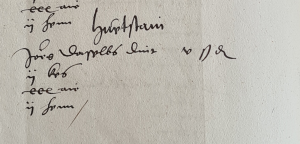
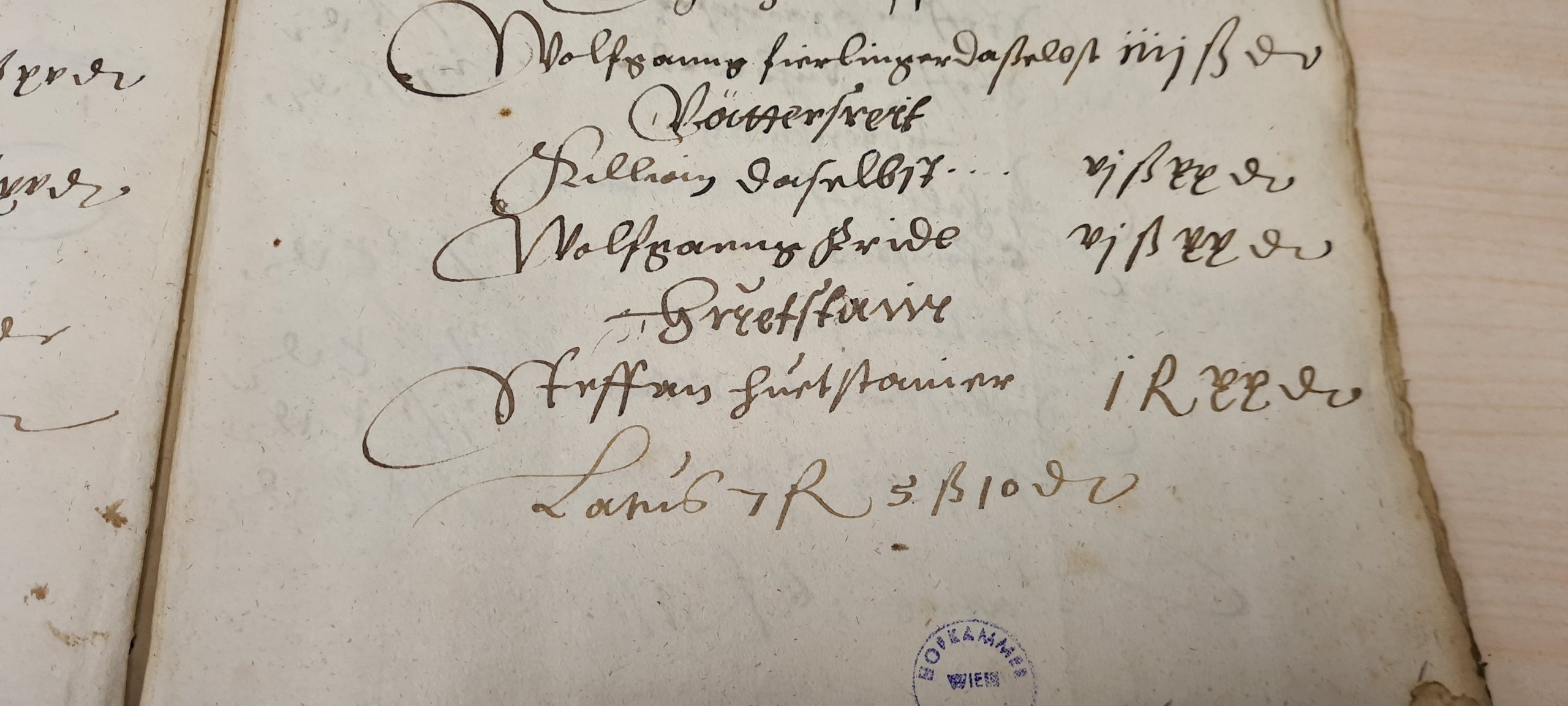

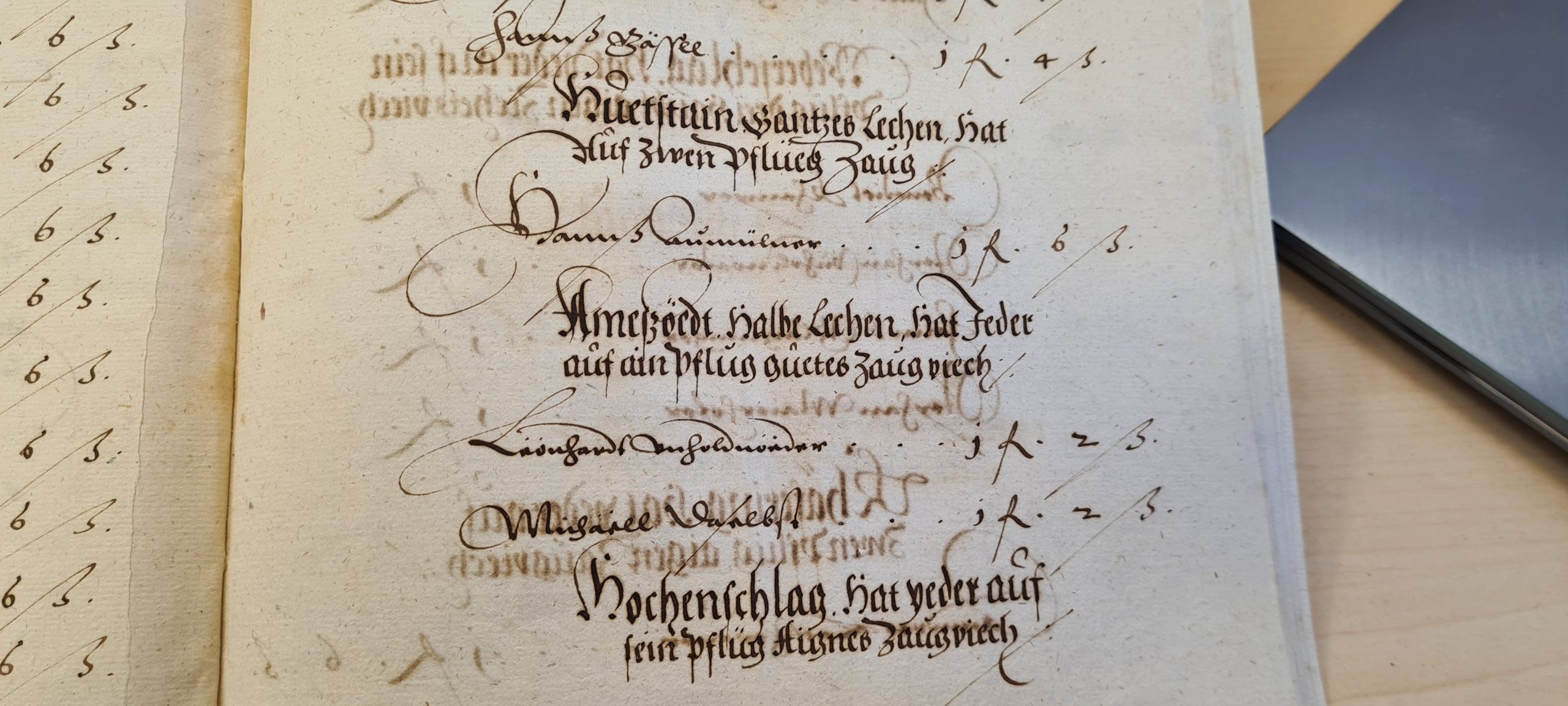
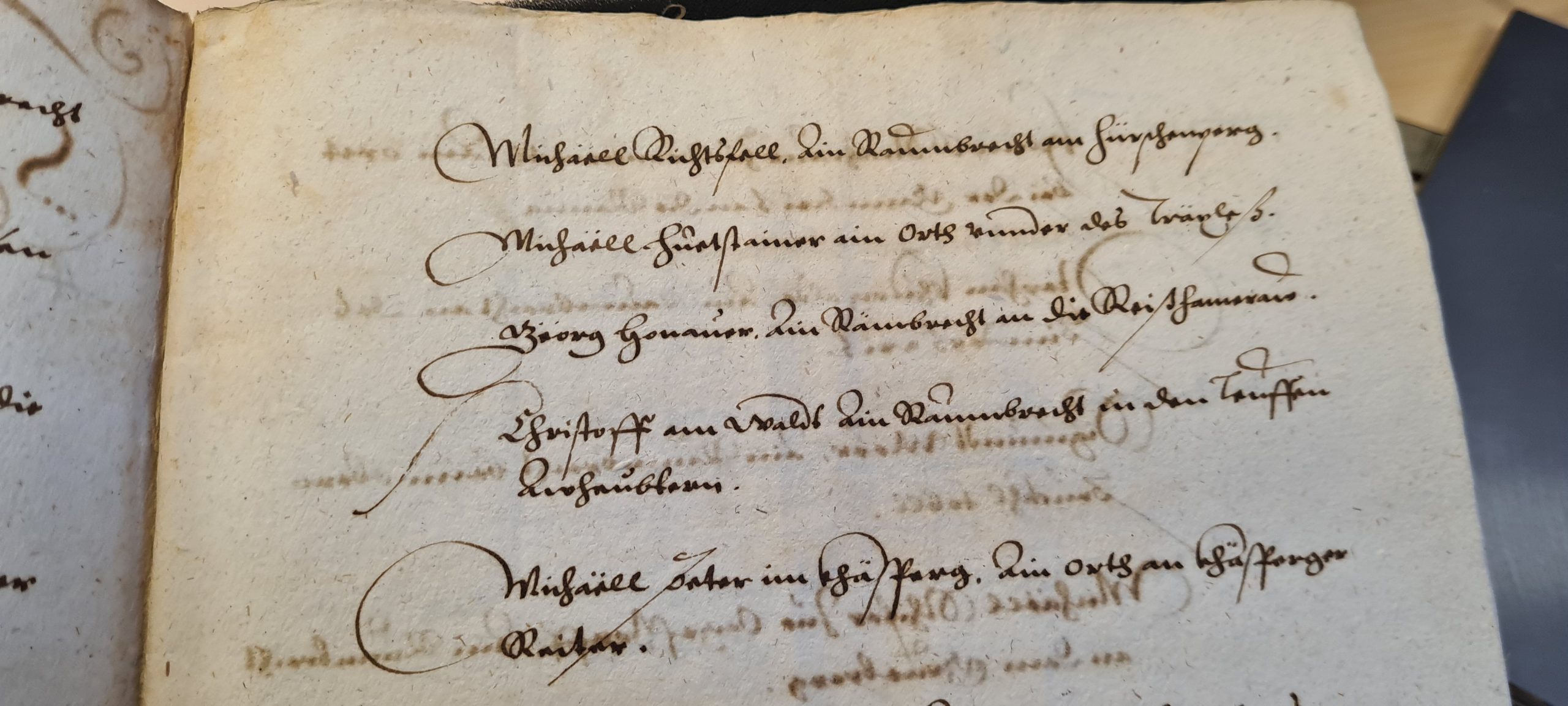
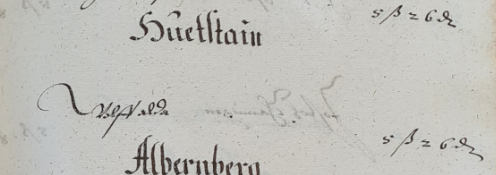
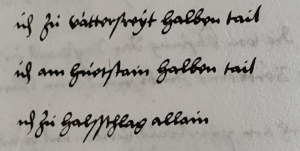
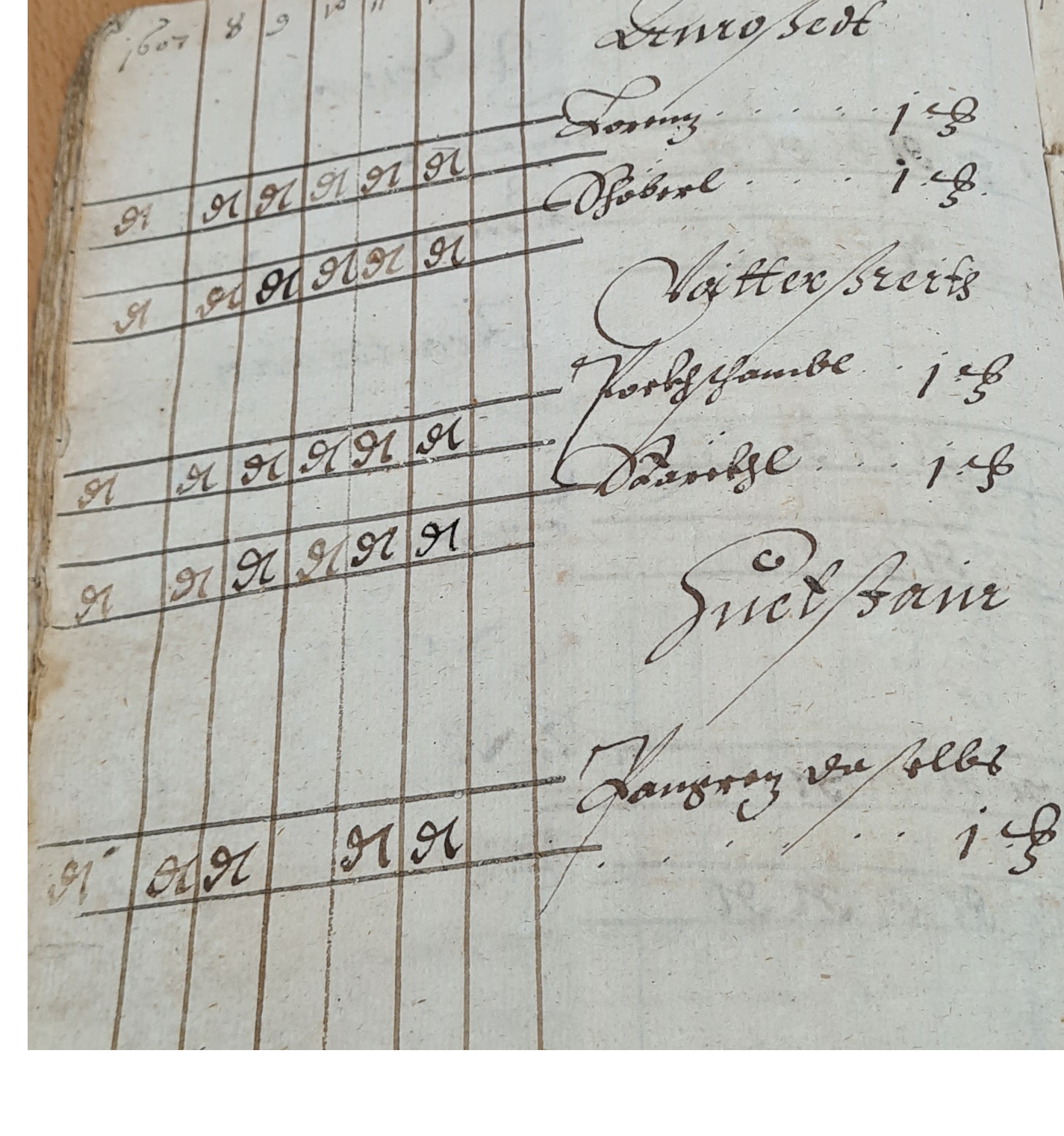
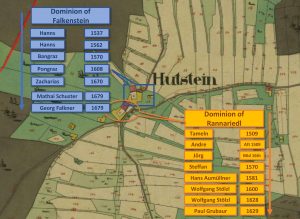
One thought on “I.1 Once upon a time”